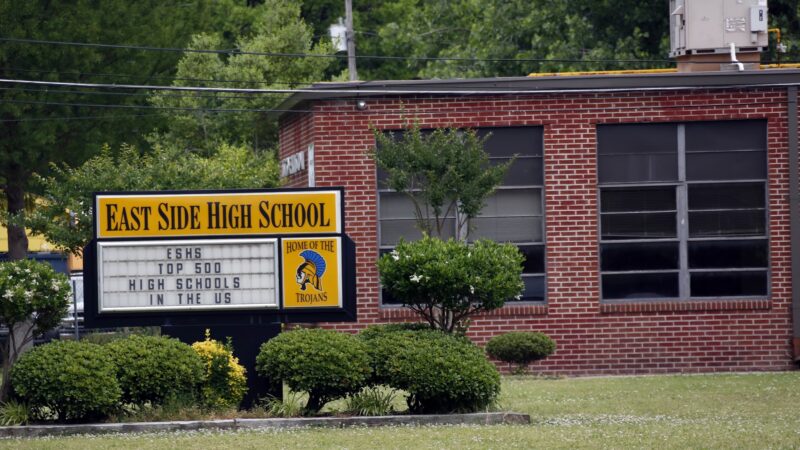What Year Is This? In Mississippi, The Fight For School Desegregation Continues
Share
Explore Our Galleries
Breaking News!
Today's news and culture by Black and other reporters in the Black and mainstream media.
Ways to Support ABHM?
Jessica Washington, The Root
Decades after Brown v. Board, the DOJ announced that 32 school districts in Mississippi are under desegregation orders.

East Side High School in Cleveland, Mississippi, did not entirely desegregate until 2017. (Rogelio V. Solis/AP)
Over half a century after the landmark Supreme Court decision, Brown v. Board, one would hope that the term school segregation would be a vestige of the past. But in the heart of the deep South, the fight to end school segregation is far from a bygone era.
On Thursday, the Department of Justice told the Associated Press that there are currently 32 school districts in Mississippi under federal desegregation orders out of 144 school districts in total. If you’re not a legal scholar, or frankly, even if you are, you might be wondering what that means.
A desegregation order is a plan that has “that has been ordered or submitted into the federal or state court… that remedies or addresses a school district’s actual or alleged segregation of students or staff on the basis of race or national origin.” A school district remains under that plan until “the court, agency or other competent officials finds that the district has satisfied its obligations.”
So in case anyone was curious, it’s not a good sign to be under a desegregation order, and Mississippi is a pretty bad offender. In 2017, the Cleveland, Mississippi, school district was in the spotlight after years of litigation. The school board agreed to end their practice of having one white and one Black school after nearly 50 years of litigation from the DOJ and outside groups.
Read the rest of the article here.
Learn more about segregation in American history in this virtual exhibit.
Find more Breaking News here.









Comments Are Welcome
Note: We moderate submissions in order to create a space for meaningful dialogue, a space where museum visitors – adults and youth –– can exchange informed, thoughtful, and relevant comments that add value to our exhibits.
Racial slurs, personal attacks, obscenity, profanity, and SHOUTING do not meet the above standard. Such comments are posted in the exhibit Hateful Speech. Commercial promotions, impersonations, and incoherent comments likewise fail to meet our goals, so will not be posted. Submissions longer than 120 words will be shortened.
See our full Comments Policy here.